The Bee House Project is a public art piece revealed during the 2016 Great Insect Fair and later installed on the Penn State, University Park Campus. This immersive installation consists of a 4’x 6’x 12’ structure, a film entitled Honeybees and Homemakers: Gendered Labor and Pollination, and two live honeybee colonies.
Artist Bio:
Christina Dietz is a 2017 graduate of the Pennsylvania State University, where she received a BA in psychology and a BFA in Sculpture. Dietz received the 2016 Apes Valentes Undergraduate Research Award through the Penn State Department of Entomology and became a Center for Craft, Creativity, and Design Windgate Fellow in 2017. Growing up in Central Pennsylvania has helped to cultivate her interest in where things come from and how they are made. She explores the glut and mechanized world of post-industrialized processed food as well as the intimate act of home cooking. Her work examines boundaries, sincerity, self-worth and societal roles through the lens of both traditional and contemporary methods of food production.
The Bee House
The Bee House poses as a domestic space, inviting visitors to view a video while surrounded by the warm buzzing of honeybee activity. Observation hives are installed in the windows of the house, drawing attention to the invisible labor of an insect that is responsible for the majority of food production. This immersive installation connects the free labor of honeybees with the domestic and emotional labor expected from women in our current patriarchal and capitalist society.
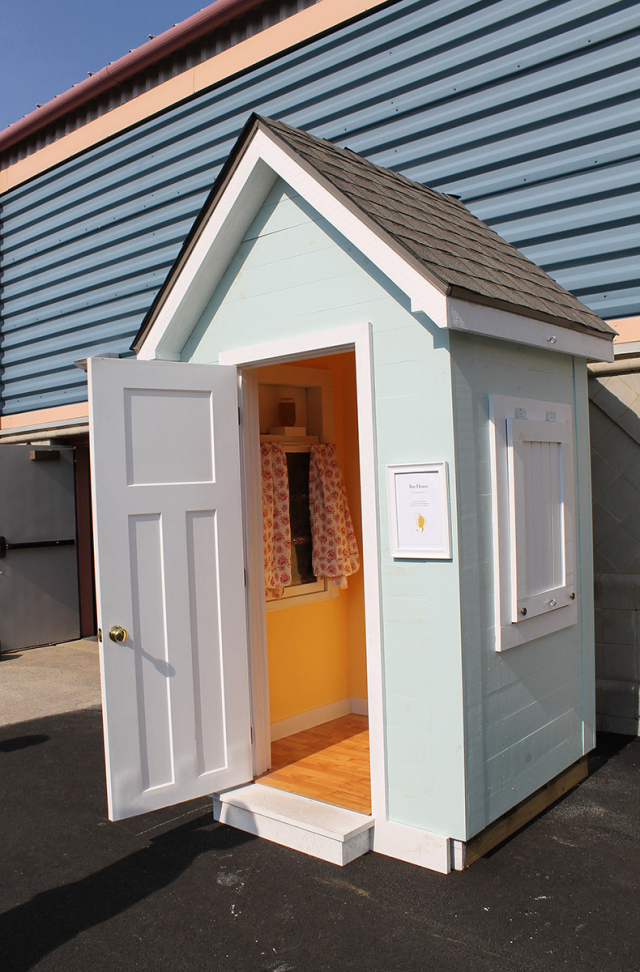
Immersive Installation by Christina Dietz (2016)
Installation with house structure (wood, drywall, flooring, shingles), video, and observation hives (two honeybee colonies, tempered glass, wood) at the PSU Department of Entomology Great Insect Fair at University Park Campus. (Photography by Helen Maser)
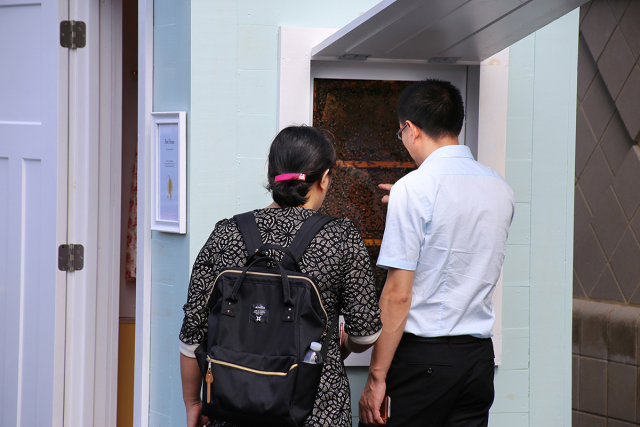
Immersive Installation by Christina Dietz (2016)
Installation with house structure (wood, drywall, flooring, shingles), video, and observation hives (two honeybee colonies, tempered glass, wood) at the PSU Department of Entomology Great Insect Fair at University Park Campus. (Photography by Helen Maser)
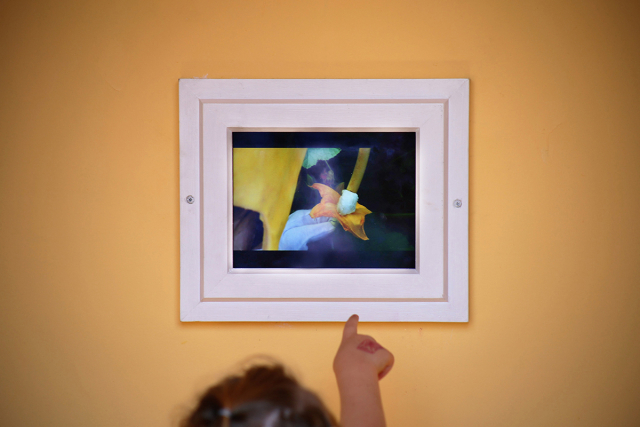
Immersive Installation by Christina Dietz (2016)
Installation with house structure (wood, drywall, flooring, shingles), video, and observation hives (two honeybee colonies, tempered glass, wood) at the PSU Department of Entomology Great Insect Fair at University Park Campus. (Photography by Helen Maser)

Immersive Installation by Christina Dietz (2016)
Installation with house structure (wood, drywall, flooring, shingles), video, and observation hives (two honeybee colonies, tempered glass, wood) at the PSU Department of Entomology Great Insect Fair at University Park Campus. (Photography by Helen Maser)
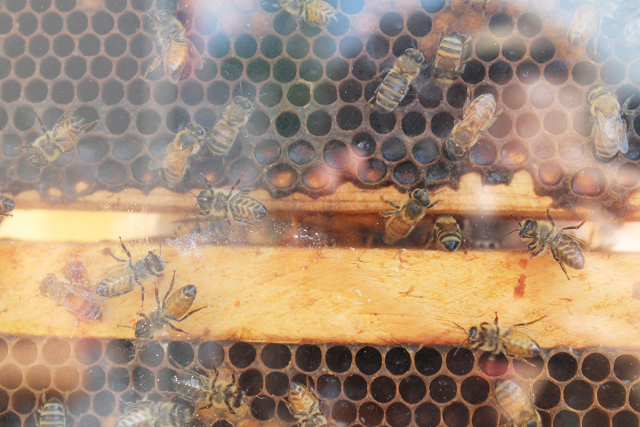
Immersive Installation by Christina Dietz (2016)
Installation with house structure (wood, drywall, flooring, shingles), video, and observation hives (two honeybee colonies, tempered glass, wood) at the PSU Department of Entomology Great Insect Fair at University Park Campus. (Photography by Helen Maser)
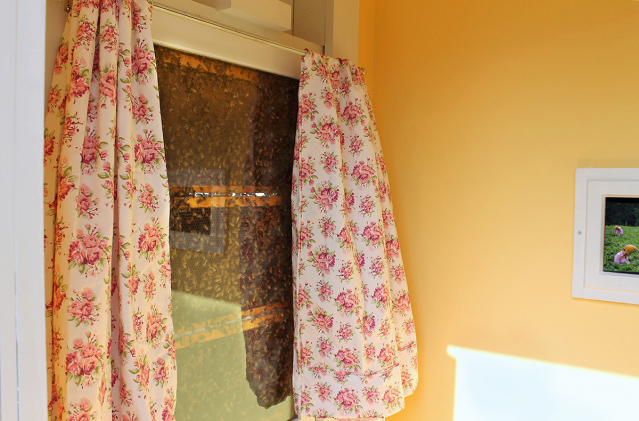
Immersive Installation by Christina Dietz (2016)
Installation with house structure (wood, drywall, flooring, shingles), video, and observation hives (two honeybee colonies, tempered glass, wood) at the PSU Department of Entomology Great Insect Fair at University Park Campus. (Photography by Helen Maser)
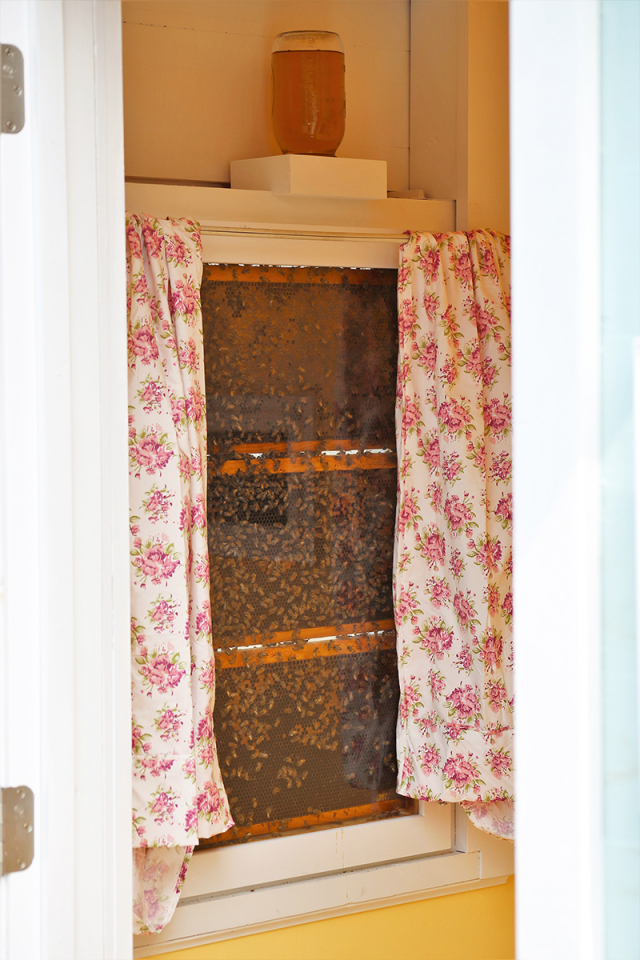
Immersive Installation by Christina Dietz (2016)
Installation with house structure (wood, drywall, flooring, shingles), video, and observation hives (two honeybee colonies, tempered glass, wood) at the PSU Department of Entomology Great Insect Fair at University Park Campus. (Photography by Helen Maser)
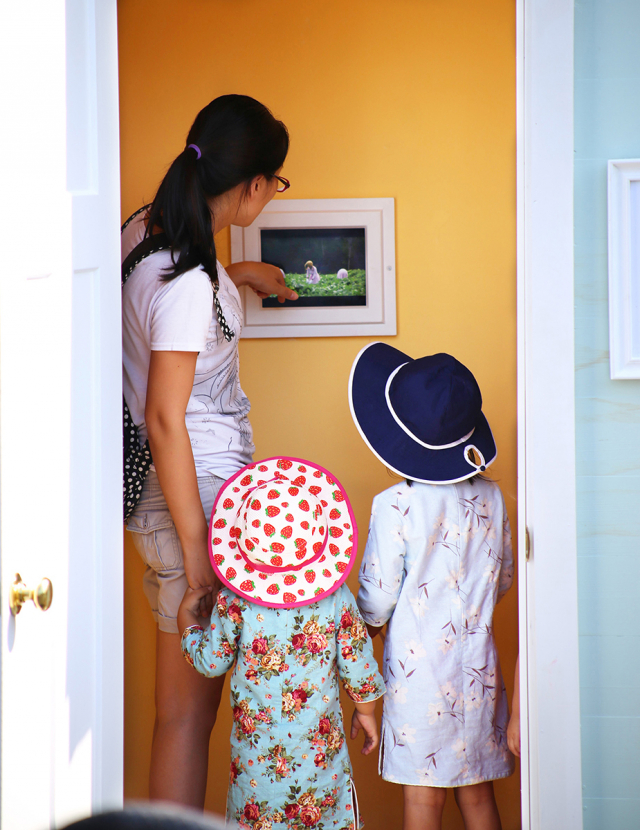
Immersive Installation by Christina Dietz (2016)
Installation with house structure (wood, drywall, flooring, shingles), video, and observation hives (two honeybee colonies, tempered glass, wood) at the PSU Department of Entomology Great Insect Fair at University Park Campus. (Photography by Helen Maser)
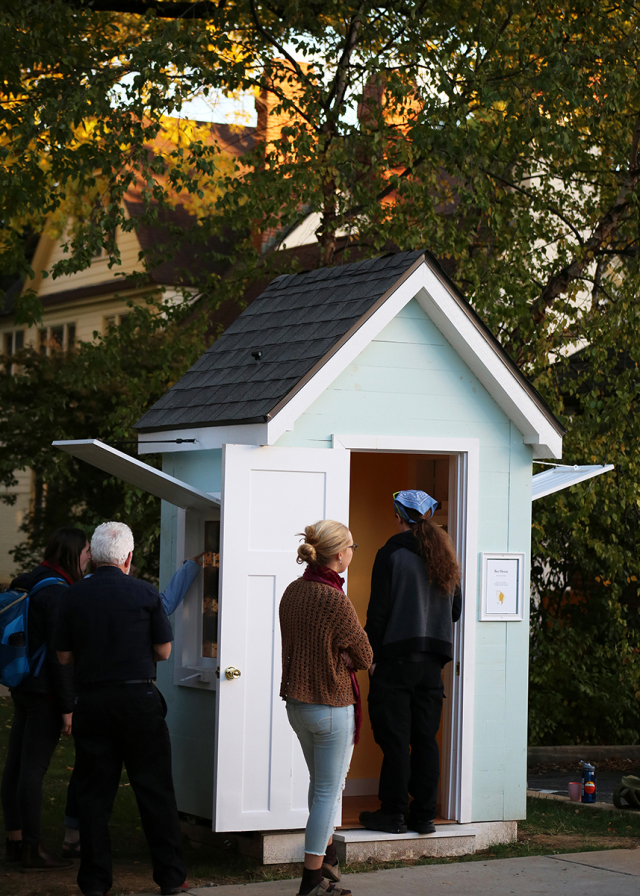
Immersive Installation by Christina Dietz (2016)
Installation with house structure (wood, drywall, flooring, shingles), video, and observation hives (two honeybee colonies, tempered glass, wood) at the closing exhibition for the Bee House Project at the School of Visual Arts. (Photography by Helen Maser)
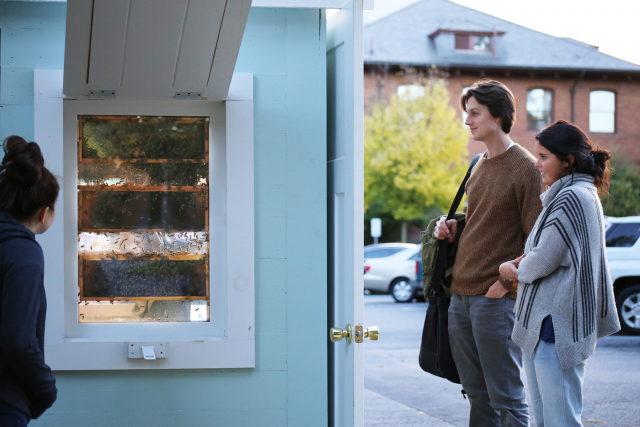
Immersive Installation by Christina Dietz (2016)
Installation with house structure (wood, drywall, flooring, shingles), video, and observation hives (two honeybee colonies, tempered glass, wood) at the closing exhibition for the Bee House Project at the School of Visual Arts. (Photography by Helen Maser)
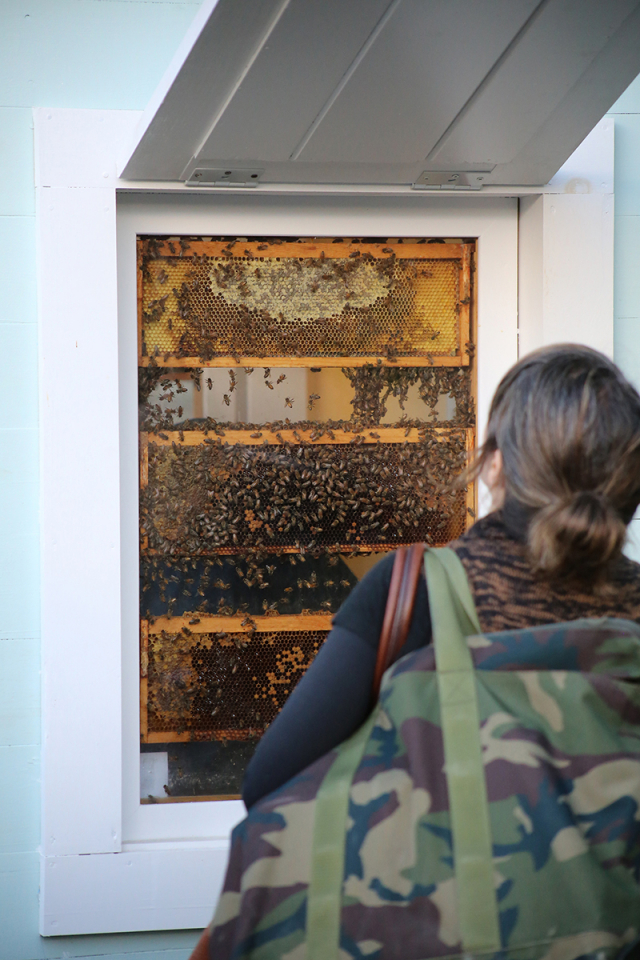
Immersive Installation by Christina Dietz (2016)
Installation with house structure (wood, drywall, flooring, shingles), video, and observation hives (two honeybee colonies, tempered glass, wood) at the closing exhibition for the Bee House Project at the School of Visual Arts. (Photography by Helen Maser)
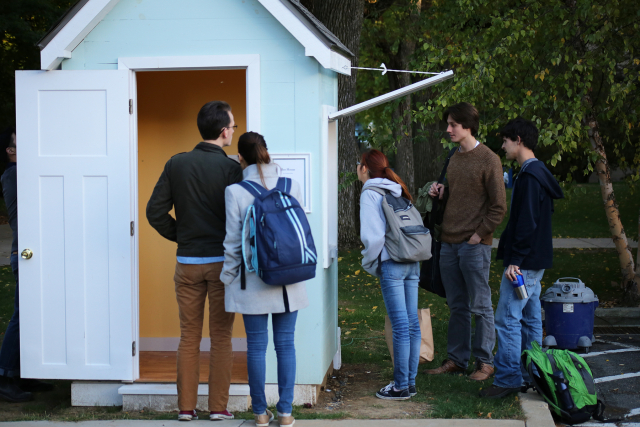
Immersive Installation by Christina Dietz (2016)
Installation with house structure (wood, drywall, flooring, shingles), video, and observation hives (two honeybee colonies, tempered glass, wood) at the closing exhibition for the Bee House Project at the School of Visual Arts. (Photography by Helen Maser)
Honeybees and Homemakers: Pollination and Gendered Labor
By Christina Dietz
Cinematography and editing by Michelle Nash
Photography by Helen Maser
Graphics by Julianna Dietz
Performers: Lindsey Landfried, Sidney Mullis, Torri Bouslough
2016, video, 6:59 min.
Society values women under the condition that they act in accordance with the normative role of caregiver as well as that of domestic servant. This role is hyperbolized in Honeybees and Homemakers, as the women take on the role of honeybee in a future society that has driven bees to extinction. They become a prosthetic pollinator, using their hats as reproductive aids. Both women and honeybees as a whole, are expected to perform an invisible labor necessary for sustaining life. This labor is undervalued and overlooked until the absence of those that perform it is felt, at which point it is too late. In the film, the role of fieldworker is aestheticized, reflecting the trend of growing food/gardening happening in privileged households (often from a white upper-middle-class background) that have the time and money to consider this a hobby. The U.S. romanticizes its roots of agriculture while wholly ignoring the labor of enslaved people and immigrants that have fed its people for centuries. The systematic homogenization of society and agriculture is a dangerous road that leads to extinction.
Video Production Still Images
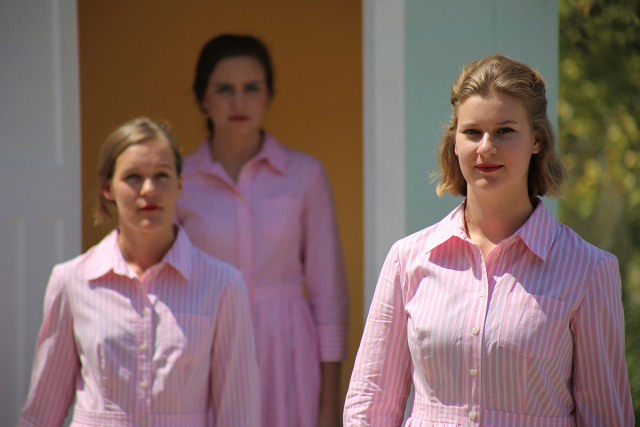
Video Still by Christina Dietz (2016)
Cinematography and editing by Michelle Nash; Photography by Helen Maser; Graphics by Julianna Dietz
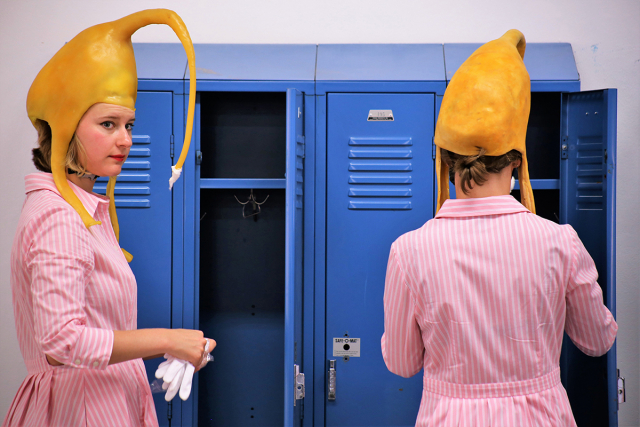
Video Still by Christina Dietz (2016)
Cinematography and editing by Michelle Nash; Photography by Helen Maser; Graphics by Julianna Dietz
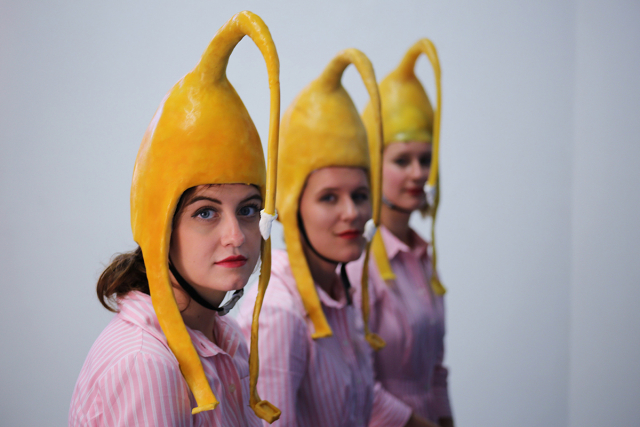
Video Still by Christina Dietz (2016)
Cinematography and editing by Michelle Nash; Photography by Helen Maser; Graphics by Julianna Dietz
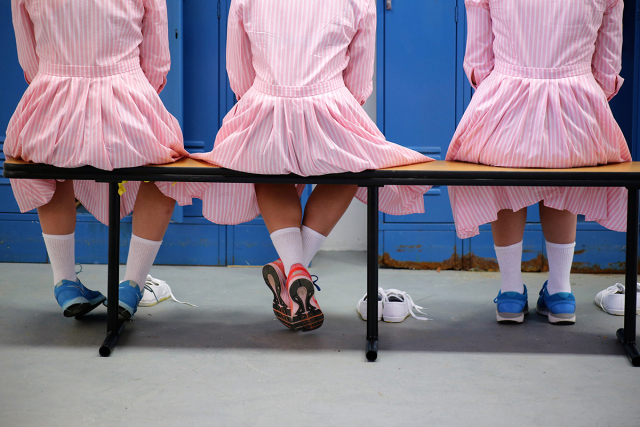
Video Still by Christina Dietz (2016)
Cinematography and editing by Michelle Nash; Photography by Helen Maser; Graphics by Julianna Dietz
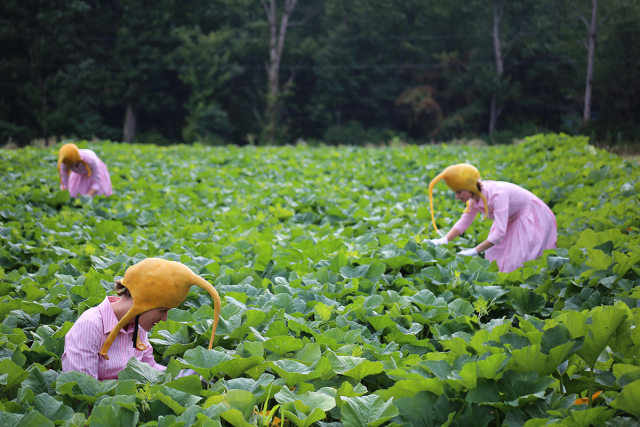
Video Still by Christina Dietz (2016)
Cinematography and editing by Michelle Nash; Photography by Helen Maser; Graphics by Julianna Dietz

Video Still by Christina Dietz (2016)
Cinematography and editing by Michelle Nash; Photography by Helen Maser; Graphics by Julianna Dietz
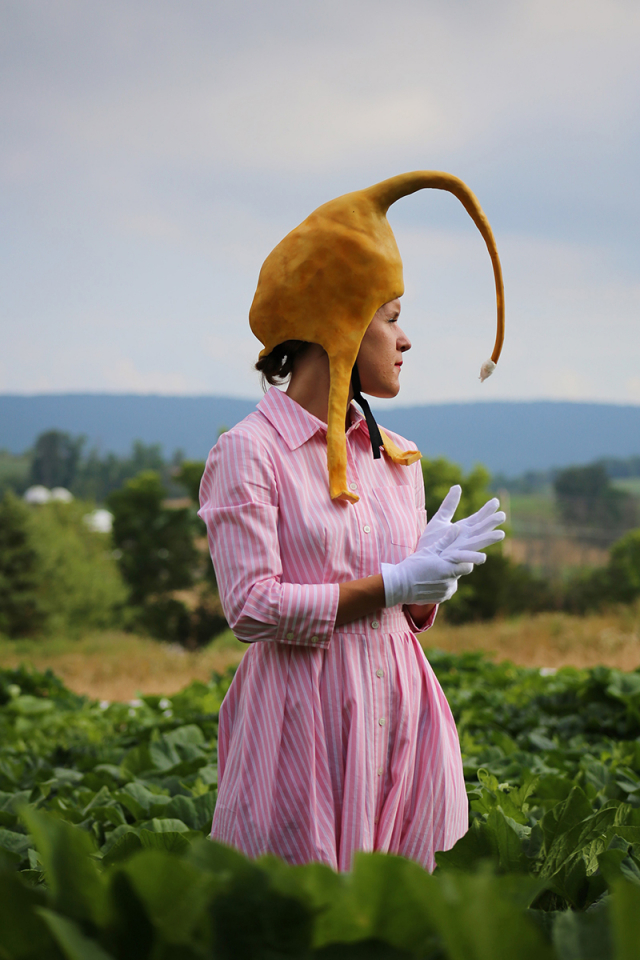
Video Still by Christina Dietz (2016)
Cinematography and editing by Michelle Nash; Photography by Helen Maser; Graphics by Julianna Dietz
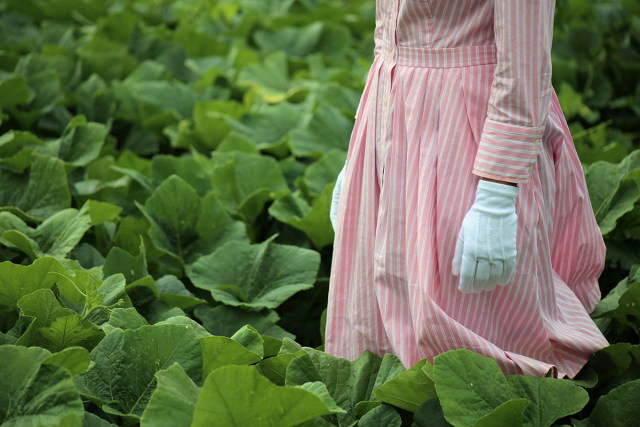
Video Still by Christina Dietz (2016)
Cinematography and editing by Michelle Nash; Photography by Helen Maser; Graphics by Julianna Dietz
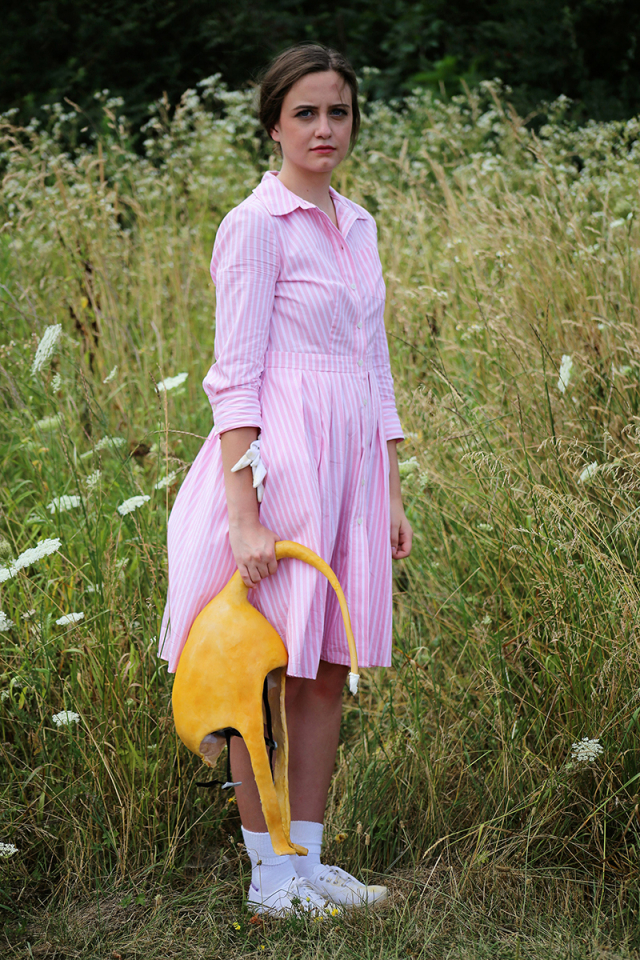
Video Still by Christina Dietz (2016)
Cinematography and editing by Michelle Nash; Photography by Helen Maser; Graphics by Julianna Dietz
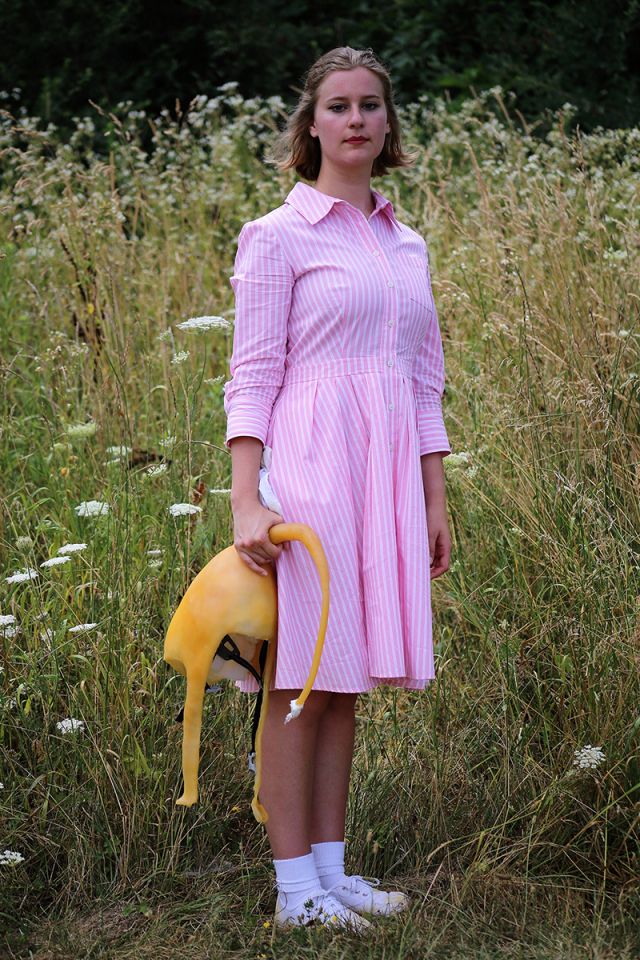
Video Still by Christina Dietz (2016)
Cinematography and editing by Michelle Nash; Photography by Helen Maser; Graphics by Julianna Dietz
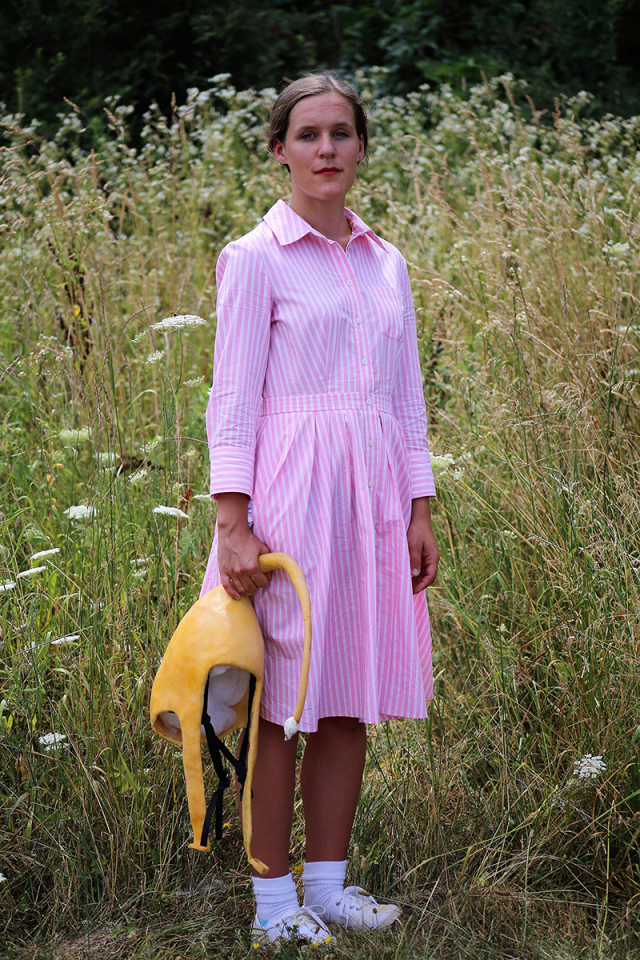
Video Still by Christina Dietz (2016)
Cinematography and editing by Michelle Nash; Photography by Helen Maser; Graphics by Julianna Dietz
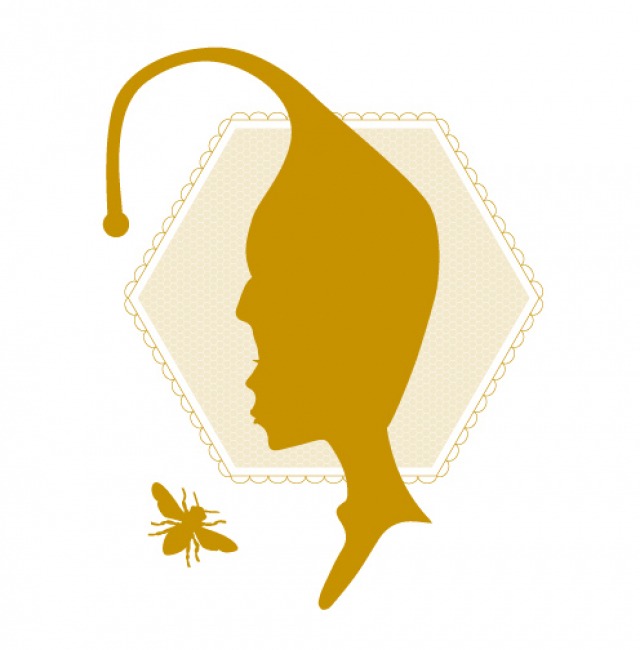
Project Logo by Christina Dietz (2016)
Cinematography and editing by Michelle Nash; Photography by Helen Maser; Graphics by Julianna Dietz